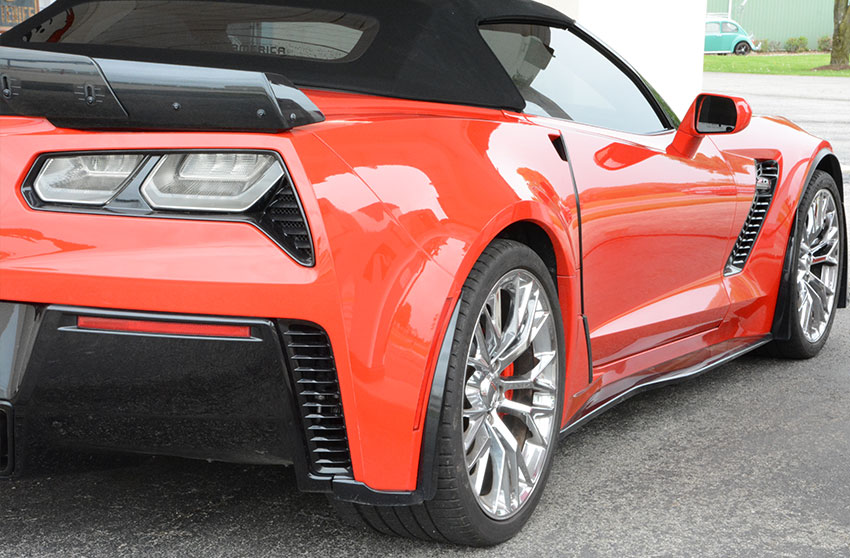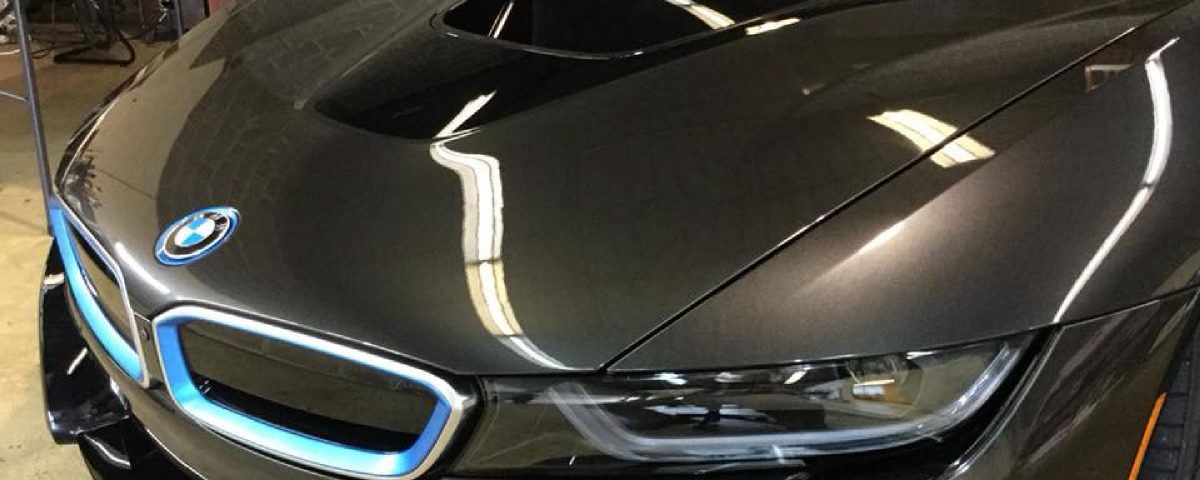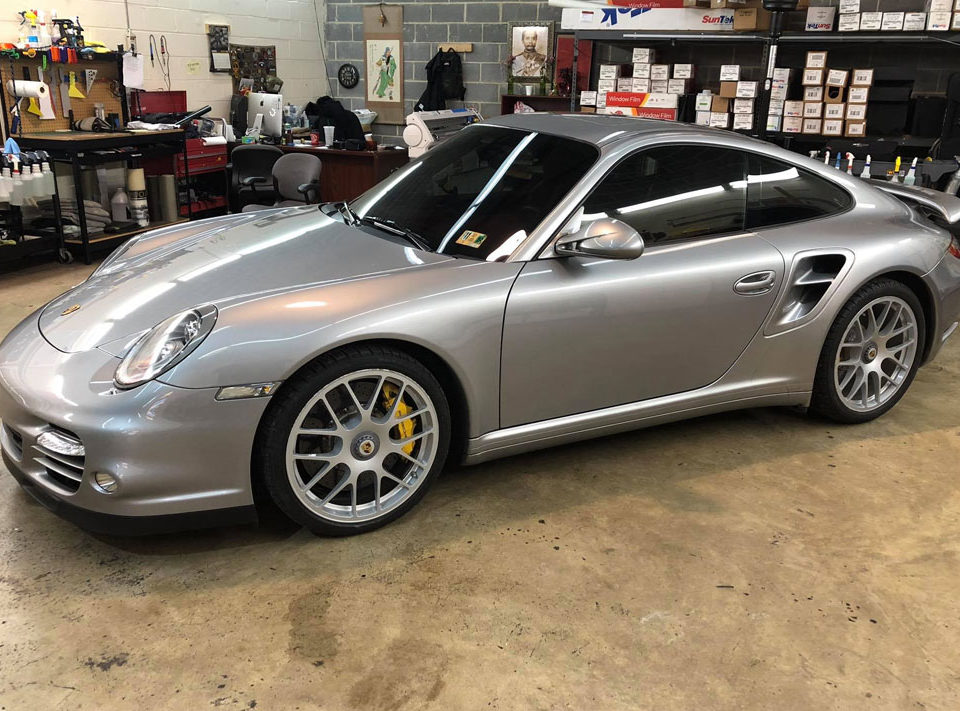
Tinting Your Car for The First Time? Things You Should Know
February 13, 2024
Tricks to Keep Your Car Cool in Summer
March 10, 2024Maintaining your car’s beautiful, factory-fresh appearance is no easy task, but it is feasible with the correct amount of TLC – and, possibly, some paint protection film.
Paint protection film protects your paint from the environment, stone chips, and key marks with an undetectable plastic coating.
The idea is to save money on regular visits to or from your scratch repair specialist by buying a substance that forms a barrier over your car’s paintwork, maintaining its appearance and residual value in the process.
Would you like to know more about paint protection films? Keep reading:
What is it?
Paint protection film is produced from a durable, transparent, and flexible acrylic, urethane, or polyurethane film. It is used on a car’s surfaces.
It was originally designed for military usage during the Vietnam War, when it was applied to helicopter rotor blades that were prone to damage.
The film protects your vehicle’s paint from stone chips, environmental toxins, bird lime, insects, scratches, and small abrasions.
If you would like to have the film on your car, you simply need to visit your local protective car film shop and have it installed.
How the film is installed
Most installers will use templates to ensure your car’s exact fit. They start by thoroughly cleaning the bodywork, then applying the film on each area with water and a slip solution to slide the film into place.
Once the film is in place, the installers push the liquid beneath out. Some businesses wrap the film over the panel’s edges, while others leave it flush.
For the best outcome, ensure your car is done in a reputable shop.
Many people hire the first installers that pop up in the results pages. This isn’t the right thing to do. Instead, you should take the time to visit the shops and gauge the quality of their work.
As a rule of thumb, you should only work with a company that has a proven record and produces excellent results.
You should note that you can have the film installed on panels without the original paint but if a panel has been repainted, the restoration must be of good quality; otherwise, the paint may fall off when the film is removed.
If you just painted the panels, allow the new paint to fully cure before applying the film.
You can choose whether to protect only the car’s most vulnerable areas, such as the bumpers, bonnet, wheel arches, or the entire vehicle. It’s all up to you.
If you aren’t sure, you can always get the input of a professional.
How long the fitting takes depends on how much is fitted. It can take anywhere from one morning to several days.
Installing the film by yourself
If you don’t have the budget to install the film in a professional film installation shop, or you are a DIY enthusiast, you can always install the film yourself.
Even if you have never done it before, you can fill the smaller pieces at home. Some firms sell motorcycling kits for DIY installation; nevertheless, it is normally better left to specialists.
If you opt to install the film yourself, be ultra-cautious about how you go about it. Before applying PPF, spray the area with soapy water. To boost efficiency, add a small amount of alcohol to the spray. This method allows you to clean while also degreasing.
You should carefully apply the film following the instructions given in the packaging.
Taking care of your film
The key to taking care of your film is to watch how you clean it.
Ideally, after putting the film, you should avoid commercial car washes. Yes, giving them up can be difficult, but if you want the coating to stay longer, you have to.
Visit these car washes less regularly. And avoid using a pressure washer at the margins of the film.
Other things you should do include:
- Apply vehicle wash soap with a clean microfiber mitt.
- Soak difficult-to-clean areas with soap for several minutes.
- For particularly difficult places, use 99% isopropyl alcohol or lacquer thinner.
- Dry the coating with a microfiber towel.
- Never clean your coated car using brushes, terry cloths, or paper products. They will dull the surface and, in some cases, ruin it.
- Immediately remove any dead bugs or dirt droppings. They may leave a permanent stain on the film.
- Pay careful attention to the film’s edges, where dirt accumulates.
- Never use abrasive materials.
If you have the budget, invest in high-quality cleaning products.
Try to avoid using low-quality car wash soap. This is because it could contain strong chemicals that degrade the film or dull the coating. When shopping, select shampoos with lubricant ingredients.
When purchasing a microfiber mitt, be sure it is particularly made for automobile care.
If you wax the film, be sure it does not include more than 5% naphtha or kerosene. Avoid waxes containing colors.
What to do when the film is damaged
You can either remove the damaged film or repair it. Of course, this will depend on the severity of the damage.
One of the primary benefits of high-quality PPF is its self-healing ability. A high-quality Paint Protection Film and a high-quality installation will always provide longer-lasting and more effective protection than a low-quality product. So, to have an easy time with your film, always go for a high-quality one.
Thanks to the self-healing characteristics, you can remove minor scratches and swirl marks over time using heat. The heat reactivates the film’s transparent covering, allowing it to smooth out and heal any damage.
While this is the case, it is crucial to remember that self-healing characteristics are only applicable to tiny surface scratches, and deeper or more severe damage may necessitate additional repair procedures such as patching and spot repair or a full-panel replacement.
You can easily remove the broken paint protection film Springfield using a little moderate heat from a hairdryer and install a new section.


